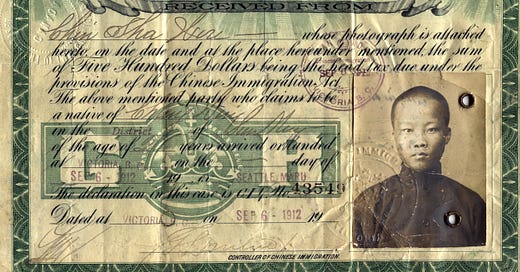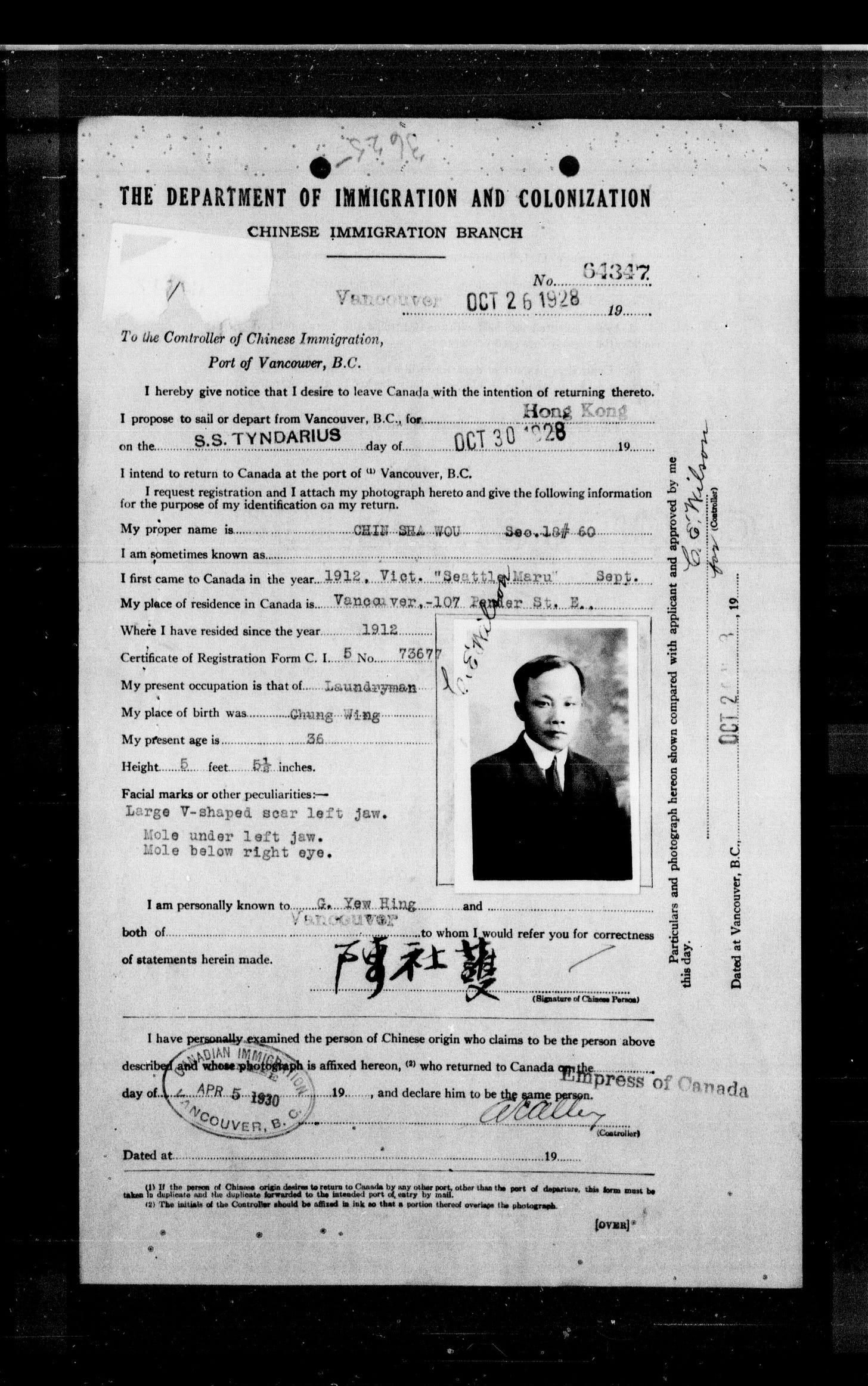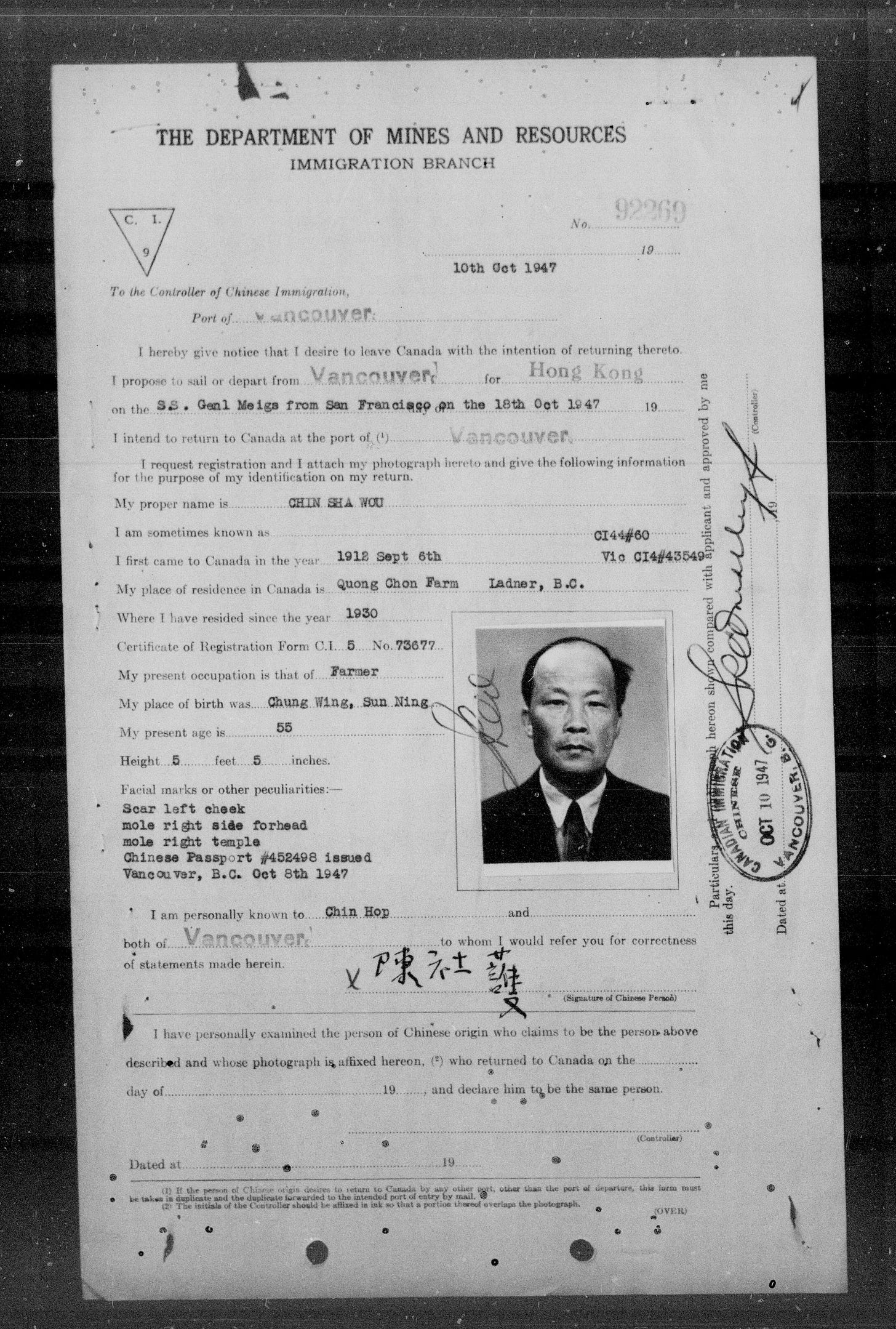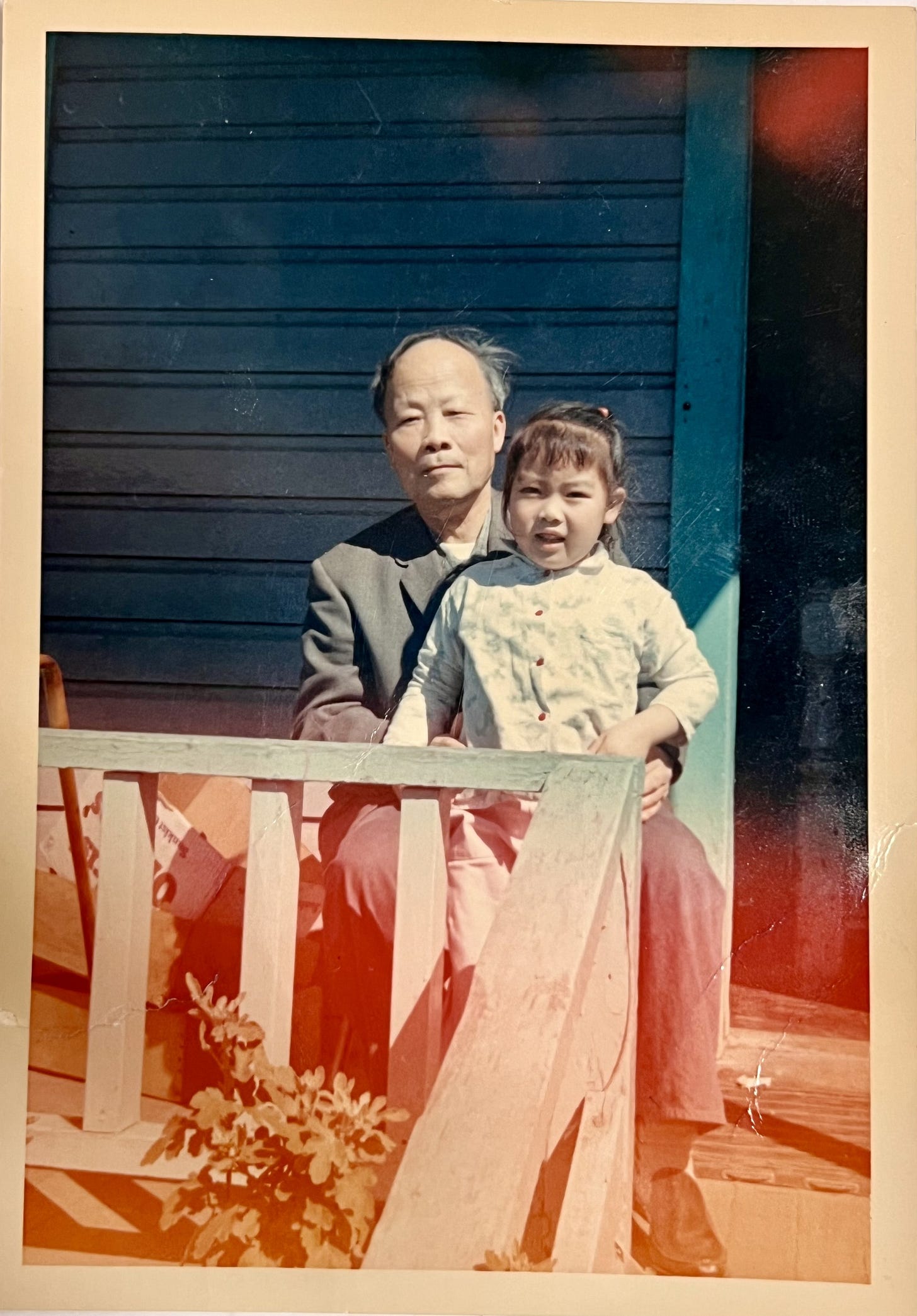Honoring my Grandfather Chin Sha Wou
Chin Sha Wou came to Canada on September 6th, 1912 on the Seattle Maru to a strange new land called Canada. I am here today because of him.
I was sitting on my grandfather’s knee on our front porch on Hawks Avenue in Vancouver’s Strathcona. Being three at the time, both my parents charged my grandfather to take care of me during the day while my father worked in Chinatown and my mother worked picking potatoes out on the farms in Ladner.
One of my favourite things to do, was to help light my grandfather’s pipe with the matches he kept in a rectangular tin in his pants pocket. One summer evening, my mother came home and she was angry at my grandfather. I overheard the conversation and found out that she was blaming him for allowing me to light his pipe. Apparently, I had leaned over his pipe with a lit match and in doing so, singed off the corner of my eyebrow!
This is one of the fondest memories I have of my grandfather. Until recently, I knew little about his life. What I would learn later as I grew into the person I am today, is that my grandfather’s life was full of adventure but also of sadness. In my investigation into his life, I found out how his sacrifices and hard work enabled my parents and my older brother and sister to immigrate to Canada in the 1950’s.
Last July 1st, 2023, the newly minted Chinese Canadian Museum in Vancouver’s Chinatown opened with an exhibit titled, “The Paper Trail to the 1923 Exclusion Act”. Catherine Clement, the curator had put out a call for Chinese families who had kept copies of identity documents called C.I. Certificates. C.I. Certificates were a way the Canadian government kept track of Chinese immigrants. Early Chinese immigrants faced racism, loneliness, and many worked in bitter and dangerous conditions.
While most of us celebrate Canada Day on July 1st and mark it as a happy occasion, Canada Day, has a dark side to it. On July 1st, 1923, The Chinese Immigration Act, 1923, also known as the "Chinese Exclusion Act", was a Canadian Act of Parliament passed by the government of Liberal Prime Minister William Lyon Mackenzie King, banning most forms of Chinese immigration to Canada. In fact, many early Chinese immigrants called Canada Day, “Humiliation Day”. It wasn’t until May 19th, 1947 that this racist law was repealed.
My grandfather, Chin Sha Wou, arrived on September 6th, 1912 at the age of 18. At the time, he had to pay a $500 head tax in order to enter Canada. As a poor peasant in China, he borrowed the money to pay the head tax and worked for decades to pay off this debt. His story is not unlike others who came to Canada at the time to try to make a better life.
Growing up, my parents told me that my grandfather worked at a Chinese farm in Ladner. Much to my surprise, my grandfather had some other hidden secrets that I would only discover after visiting the Chinese Canadian Museum and researching my grandfather’s past through government data bases which only recently, were publicly released.
I do not know what my grandfather did from 1912 to 1918, but I had always thought he came to Vancouver and went straight to the farms in Ladner. In actuality, I found out that my grandfather had gone to work in Bamfield, B.C. as a laundryman from 1918 to at least 1923. What was my grandfather doing there in this remote little town on the Westcoast of Vancouver Island? I contacted the Bamfield History Society and found out that my grandfather most likely worked an employee for the Bamfield Cable Station. Likely, my grandfather was one of the few Chinese men employed in Bamfield. Life must have been very lonely and he was probably paid very little for long hours of hard work.
My grandfather was to return to China two more times - once in 1928 and for the last time in 1947. On these visits, he would see his wife (my grandmother).
Shortly after his visit in 1928, my father Tan How Chin was born in 1930.
On his last visit to China in 1947, he would see my grandmother one last time. My grandfather would regularly send money back to China to support my grandmother.
I tried to find the "Quon Chon Farm” in Ladner, B.C. but was unable to. This will be the focus of future research. I do know, however, from my parents is that my grandfather lived in a rooming house with other men who also worked on the farm.
My grandfather worked hard and saved enough money to bring my father to Canada in 1956 and later my mother, brother, and sister in 1959. My parents worked for several years saving their money and bought their first house at 508 Hawks Avenue.
When they moved in, they asked my grandfather if he would like to “retire” and come and live with us. In exchange for living with us, my parents asked him to look after me. He jumped at the chance and from the time I was born till I was five, he watched over me from that front porch. He would sit on his wooden chair and watch me ride my tricycle up and down the sidewalk. He would teach me some basic English words. But most of all, up till that fateful afternoon, he would let me strike that match, lean over, and light his pipe.
I would like to honor my grandfather by going to Bamfield, B.C. in the near future and try to find out more about what his life was living in this remote small town in the 1920’s. There is more of his story to come.
This is the only photo I have of my grandfather and me with both my eyebrows intact.









Fascinating
A moving account of early Chinese immigrants and their family impact, leaving a strong legacy!